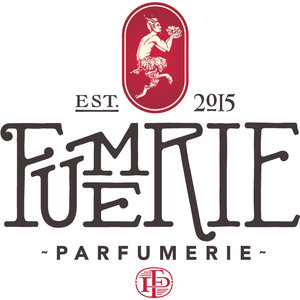Mid November of 2022, I was asked to join a panel on fragrance for The American Society of Aesthetics (ASA), at the Embassy suites in downtown Portland. The below post is inspired by my presentation and represents the core ideas shared that day.
Many years ago, I married into a family that owned a fragrance boutique and ended up working for them for over twenty years. Before joining the business, my previous experience with fragrance was limited to smelling a few things in department stores and lightly exploring essential oils. I admit that initially I was quick to judge smells as good or bad and had a very limited vocabulary when it came to describing my olfactive experiences. Since then, I have consciously tapped into my curiosity around the world of scent and been open to smells that I would have earlier labeled as unpleasant or downright repulsive. It can be illuminating to slow down and smell with more mindfulness and less judgement.
Working on the retail side of the fragrance industry for so many years, I continue to find it fascinating that most of us will go in for a second sniff of something that we find highly unpleasant or confusing. I’ve even had customers experience a gag reflex only to put the scent strip back up to their nose in an effort to comprehend the experience. Dopamine is released in the body upon smelling something novel and the brain actually creates new tracks in it’s effort to integrate this new smell into our olfactive experience. We are wired to quickly recognize specific smells as unsafe such as rotten food, burning plastic, human waste…etc. but other polarizing smells such as gasoline, sulfur, even body odors may deserve our attention in a less biased manner. Opening our minds to a more expanded smell palette only widens our enjoyment and appreciation of our daily life experience.
Animalics in perfume have been around since Antiquity. In Egypt, animalic notes ( fragrant materials that were originally sourced from animals), were used to embalm the body and communicate with the divine. Some were used for their curative virtues. Supposedly Cleopatra made perfumes with healing powers from the secretions of civet cats. During the Renaissance period, it was the upper class that partook of animalic scents which became a symbol for delineating high social status from the commoners. Animalic notes include but are not limited to the following (the fragrances listed in parentheses are examples of blends that highlight that specific animalic material) :
Musk (Musc Tonkin by Parfum d’Empire)
Musk was sourced from musk deer which are native to Asia. The material was thought to hold aphrodisiac powers. The species is now protected and the trade in animal musk has been prohibited. A synthetic musk is used for contemporary formulations.
Ambergris (Mxxx. by Eris)
One percent of Sperm Whales produce what is known as Ambergris. These whales have a waxy film that coats the inside of their intestines, protecting them from sharp squid beaks and cuttlefish. Once this excrement leaves the body, it is cured by the sunlight, oxygen and saltwater. The result is the most wonderful, warm and enveloping scent that adds fullness to a blend as well as serving as an excellent fixative.
Civet (Ella by Arquiste)
Civets are small, nocturnal animals that are found mostly in southeast Asia. They are not actually a cat but instead a cat like creature of the viverred family. Civet has been used for pain relief and as a sedative but in fragrance it used as both a fixative and a scent. In it’s full strength, civet can smell very fecal but diluted it is smooth, and can read as a radiant floral.
Castoreum (Incense Rosé by Tauer)
The North American beaver secretes a fatty oil to protect it’s fur from cold and humidity. Castoreum gives off a fecal smell with strong nuances of leather and a slightly fruity aspect.
Hyraceum (Salome by Papillon)
The Hyrax are small mammals that are native mostly to Africa and the Middle East. Their habit is to defecate in the same location over generations which creates a rock like excrement that is a combination of both urine and feces sometimes referred to as African Stone. It is a deeply complex fermented scent that combines the elements of musk, castoreum, civet and agarwood.
Beeswax (Bengale Rouge by Papillon)
The essence of beeswax absolute is used in perfumery to render golden-ambery notes, and it’s honeyed facets serve well as a middle or base note.
My personal collection includes an extensive variety of vintage fragrances. Many of these earlier fragrances were not shy about using animalics in their compositions to create multi-layered lushness and depth which many contemporary fragrances are challenged to match. The International Fragrance Association (IFRA), is an industry regulatory body that sets the standards for what can and cannot be used in perfumery today. Due to ethical issues, most animalics are not sourced from animals these days but are created synthetically. Among our selection at Fumerie, all of the fragrance houses have declared that they do not use animal testing in creating their fragrances and that they abide by the IFRA standards. Just as travel can broaden our perspective of the world, so can one’s curiosity around unfamiliar and polarizing smells enhance our world experientially and sensorially. Wishing you all abundant joy and pleasure in exploring the limitless possibilities of scent discovery.


